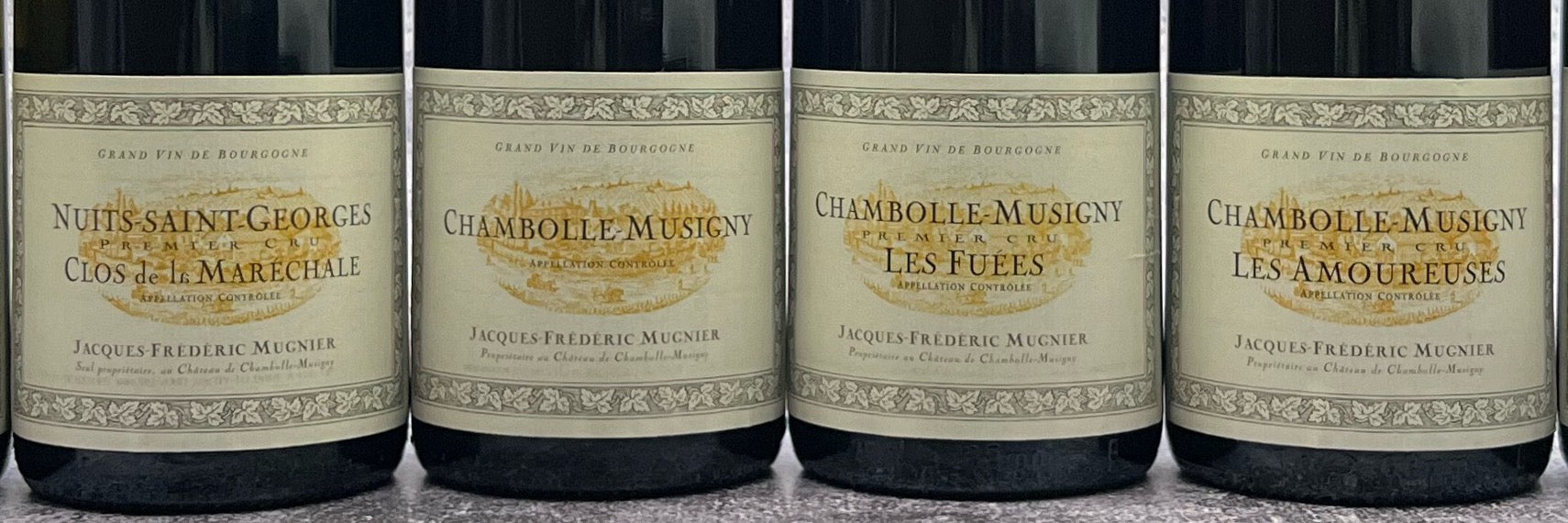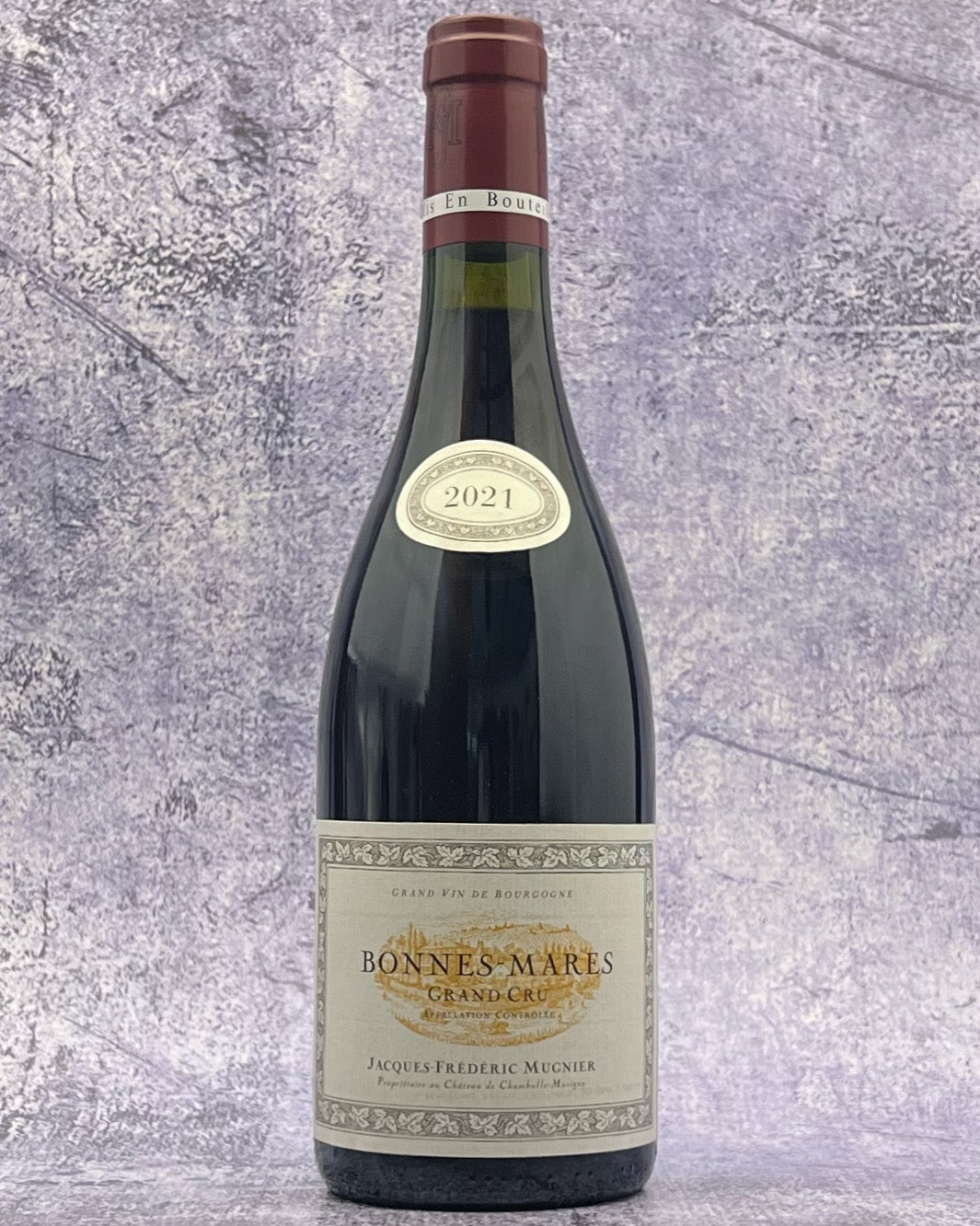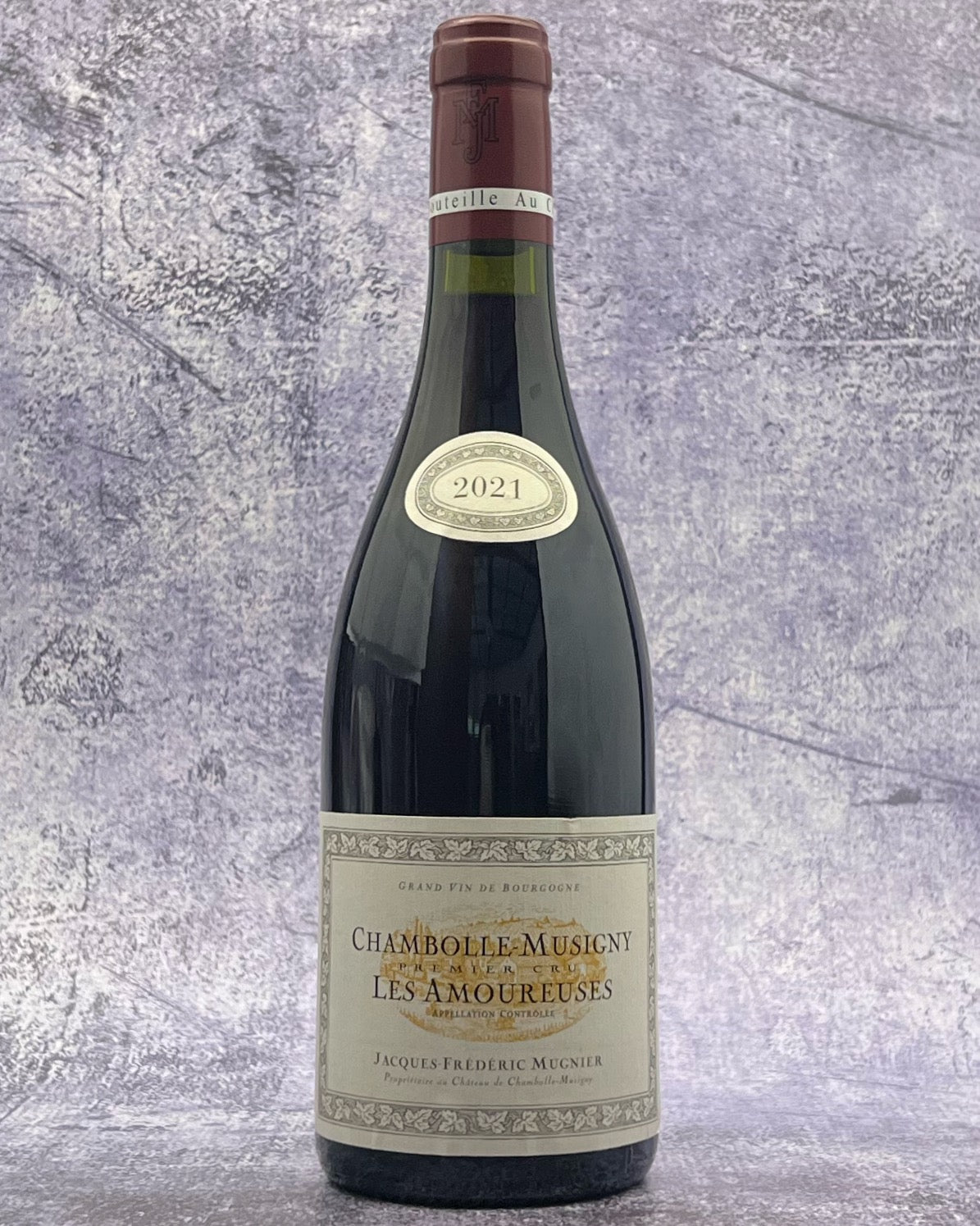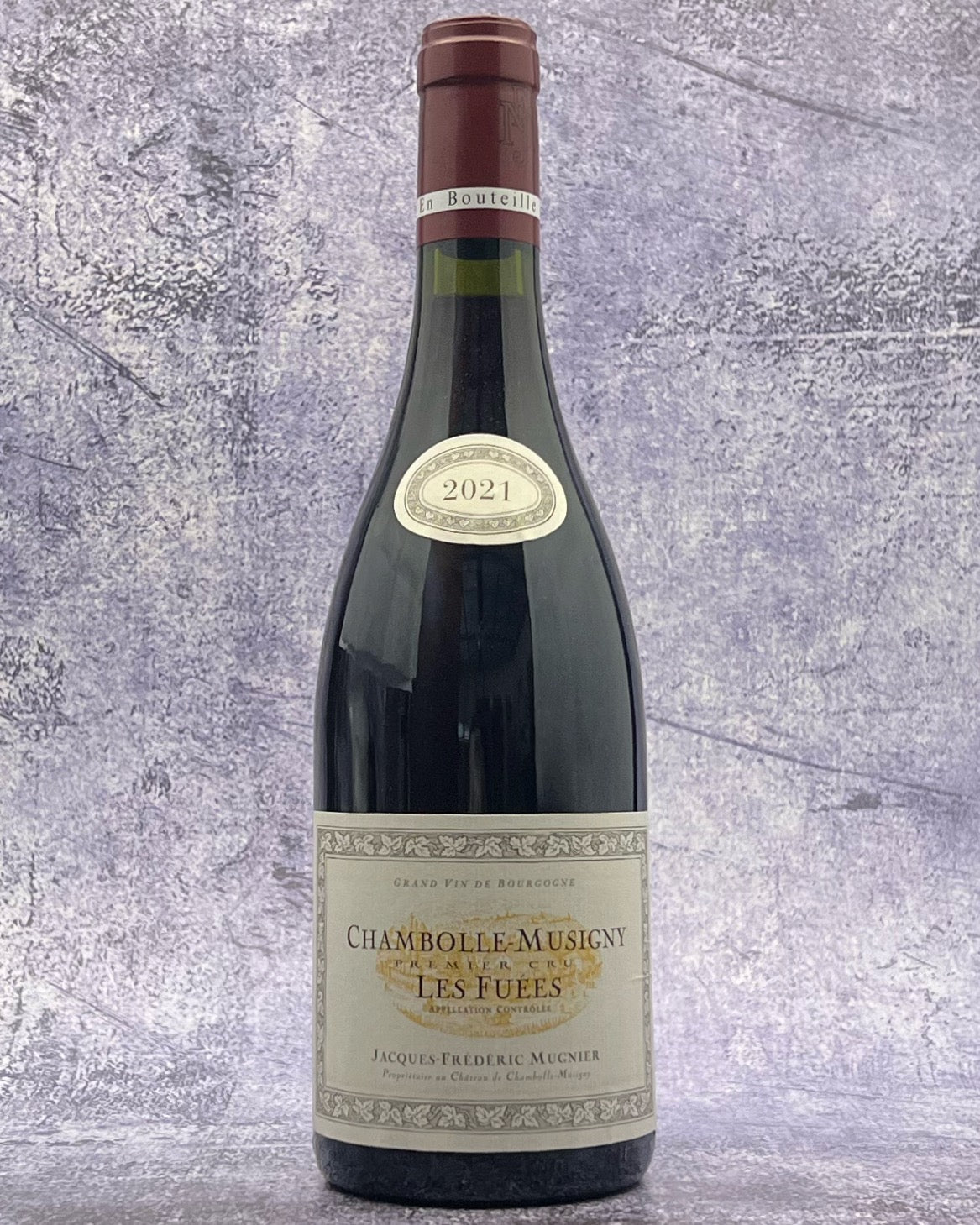
History
The history of the Domaine begins in the 1880s with Frédéric Mugnier’s great-great-grandfather, Francois, who went by the name of Frédéric. He was born in 1826, and at the age of thirty, he established a very successful company based in Dijon that produced aperitifs, absinthes, cassis, liqueurs, and aromatized wine.
In the 1880s, in the midst of the phylloxera crisis that caused the value of vineyards to plummet, Frédéric began the purchase of the domaine’s Chambolle vineyards from the Marey-Monge family. In 1899 he purchased the Chateau de Chambolle-Musigny, and in 1902, he again purchased from the Marey-Monges his last vineyard, the Clos de la Maréchale. This brought the size of the domaine to 24 ha. Frédéric died in 1911 and his only son, Ernest, died in 1924, leaving his estate to his seven children, three girls and four boys. Throughout the first half of the 20th century, Mugnier wines did well. They were exported to the United States and sold to some of the best restaurants in Paris, like Maxim’s. The Mugnier aperitif business continued to flourish.
Marcel, the grandfather of the current Frédéric, purchased his sisters’ shares in the domaine. His brothers died fairly young, and though they were all bachelors, they had mistresses to whom they left their shares. After Marcel’s death, his wife and son, Jacques-Frédéric, managed to purchase the shares back from all the mistresses but one. At her death, the vineyards were split up, 40% ending up sold, for the most part to Drouhin. This left Jacques-Frédéric as the sole heir of an estate; the size, with the exception of 43 acres of Clos Vougeot, has not changed since.
Jacques-Frédéric was born in 1923. He trained as a lawyer, but became a banker. He was not a fan of the Dijon milieu. He sold the Mugnier aperitif company to l’Héritier-Guyot, leased the vineyards to Faiveley, and in 1950, he left Burgundy to pursue a banking career in Saudi Arabia. The vineyards were leased to Faiveley for successive nine-year terms. The lease was renewed three times until 1977, when Jacques-Frédéric decided to take the vineyards back, but French law tends to side with the renter, and agricultural leases are extremely difficult not to renew. Jacques-Frédéric had no choice but to negotiate. In exchange for the return of the vineyards in Chambolle, he agreed to a 25-year lease on the Clos de la Maréchale and abandoned his 43-acre parcel of Clos Vougeot to Faiveley. He hired Bernard Clair (Bruno’s father) as manager. Wines were once again made at the domaine, but they were sold nearly in their entirety to négociants, mainly to Jadot. In 1980, Jacques-Frédéric passed away, leaving his widow to continue running the estate from afar, under the management of Bernard Clair.
At the time of his father’s death, Frédéric, who was born in 1955, was finishing his engineering studies. His first job, as an oil engineer, took him to Saudi Arabia. Whenever he could, he would help out for the harvest in Chambolle, but kept only slightly abreast of the domaine’s affairs. In 1985, tired of being expatriated, Frédéric took a sabbatical. “I dropped my bag in Chambolle”, he says “and tried to understand what was going on with the domaine.” He finished the élevage of the 1984s and made the 1985s. In the winter of 1985, he attended the enology school in Beaune. Douglas Danielak, who was working for Becky at the time and now, a winemaker in California, was in the same class as Frédéric, and he was the one who introduced him to Becky.
Because the concept of terroir is more central to Burgundy than any other wine-producing region, the idea of non-interventionist winemaking takes on the aspect of a philosophical, or even mystical quest. Confronted with the revelation of terroir, most Burgundian winemakers want to stay out of the way, and one would suspect that most of them believe that they do, but whether they actually do is another matter entirely.
In the eighties and early nineties, there was a general tendency by winemakers to beef up the wines. Many still do. With reds, it was achieved by cold soaking and vigorous, as well as frequent, punch downs. With whites, it was done with bâtonnage. Both ended up in a fair amount of heavily toasted new oak. Even if Fred admits that he was also guilty of punching down too often in the beginning, his wines stood out from the outset. In the context of those years, the wines were shockingly pure and elegant, delicate even. Compared to his peers in Chambolle, some wondered where’s the beef?; we were completely taken. “What I found tremendously appealing was that Fred was unsure and questioning,” says Becky. “It was obvious that he was exceptionally thoughtful. There wasn’t a glib bone in his body. The first wines were almost touching in their simplicity. In Burgundy, there was little of this pure approach and it moved us all.”
When Frédéric took over, there were only 4.05 ha. This left him a little time on his hands. Frédéric loved flying, so he obtained a commercial pilot’s license, and until 2000, he would work part time for the French airline, TAT. The additional income also afforded him the financial freedom to make the style of wine that he wanted.
In 2004, Faiveley’s lease of the Clos de la Maréchale ended. The size of Domaine Mugnier more than tripled overnight, from 4 to 14 ha. Because the wines of Nuits Saint Georges hardly sell with the ease of the wines of Chambolle Musigny, it was a gamble. Frédéric went full steam ahead, built a new cuverie under the courtyard of the chateau and went from two part-time vineyards workers, to seven full-time employees, plus seasonal staff. He estimates that from 2004 on, the amount of time spent on each vine has tripled.
Frédéric was only inducted into the hall of fame of Burgundy fairly recently. When the 2001 vintage was about to be released, a friend and customer of mine, who is an avid Burgundy collector, asked if I could get him magnums from the same vintage as his daughter’s birthyear. A year later, disappointed that I had not gotten him De Vogue, Roumier, and the like, he turned down the six magnums of Frédéric’s 2001 Musigny I had reserved for him (as well as magnums of Cathiard Malconsorts and Bachelet Charmes). By the 2005 vintage however, customers I had not seen for years and who had never paid attention to the domaine were tracking me down and asking me for Mugnier. I will confess that I felt some pleasure in turning them away, and it is quite possible that I used the opportunity to lecture them.
There are many paths, many beliefs, many choices that bring people to produce extraordinary wine. But I won’t beat around the bush. I find Frédéric’s approach profound. His thought process combines scientifically measured proportions, the ethical and the esthetic that it ought to serve as a theoretical model. It ought to be taught. Frédéric is an engineer by trade, and every one of his choices in the vineyards or the winery must first pass the muster of reason. Yet every one of his choices is guided by an esthetic ideal. On Frédéric’s website, a quote by Glenn Gould summarizes this ideal. Gould, whom Frédéric describe as “a tortured pianist who dared to put himself in danger by asking all the questions” comments his own 1955 recording of Bach’s Goldberg Variations: “There is a lot of piano playing going on here, and I mean that as the most disparaging comment possible.”
A few years ago, my brother, Peter, put it perfectly: “In winemaking, Fred is seeking the absence of Fred.” There is no greater respect for terroir than to seek its purest revelation by erasing not so much the self, but traces of the self, the noticeable self. Winemaking without a footprint.
Viticulture
Frédéric’s last use of an industrial fertilizer dates back to 1986, an herbicide to 1990, and an insecticide to 1995. But Frédéric is not organic, let alone, biodynamic. Not surprisingly, given both his engineering background and his character, his choice was thoroughly thought through.
“My job as a wine grower, as an engineer,” says Frédéric, “is to make choices among solutions that all have down sides. My job is not to choose between good and evil, between organic and chemical. One has to avoid poisoning one’s fellow humans, whether they are customers, neighbors, or employees. One also needs an ecosystem that is complete, alive, active. Now how does one protect it? How does one fight mildew? One has to fight it or there is no wine to talk about. Does one use copper sulfate or does one use synthetic means? (…) There is no medicine that doesn’t also have a deleterious effect. If it heals, it means that it is active on your organism and that it displaces existing physiological balances. It has effects. If it has no effects, it has no effects on sickness either. It is one of the laws of nature that there is no medicine that is not at the same time, poison.”
What separates organic grape growers in Burgundy today from those like Frédéric who practice meaningful lutte raisonnée has come down to one thing really, downy mildew, one of the two most prevalent vine diseases in northern Europe. There are only two available choices to treat it, copper sulfates or synthetic fungicides. This is viticulture’s equivalent of paper or plastic. Organic growers use copper sulfate, but it is not an ideal solution. Copper sulfate is not benevolent. It’s toxic, but more importantly, it never degrades. Inevitably, it builds up in the vineyard’s soils. Many growers, Frédéric among them, believe that its long-term effects may be worse than those stemming from the use of synthetic fungicides. There ought to be comparative science, but there is none.
Because one absolutely must treat mildew, the various organic accreditation organizations are forced to allow a solution. Synthetic chemicals being anathema, they have allowed copper sulfate, regardless of whether this solution is ultimately better or worse. “Organic is a label. A norm,” says Frédéric. “It forces you to caricature and to make rigid decisions.” Many today like to snicker at the lutte raisonnée designation. 'It’s a catch-all, it means nothing, it is a cop-out,' they say. Agreed, many do use the designation as a cop-out. But that’s the last thing Frédéric’s level of lutte raisonnée is, a cop-out. It is instead, fully reasoned. Perhaps it is time for a new designation. Lutte ultra-raisonnée?
- Domaine Profile by Becky Wasserman & Co.




